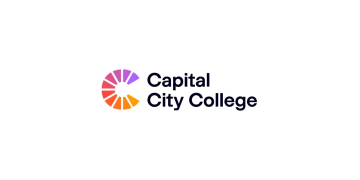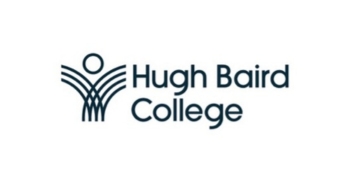The Department for Education does not hold information on the number of confirmed cases of coronavirus in schools, a Freedom of Information request has revealed.
The return to school has been disrupted with reports hundreds of schools have sent children home after suspected covid-19 cases, or a struggle to get those with symptoms tested.
An FOI submitted in July asked the DfE for the names and locations of all schools in which there have been confirmed cases of Covid-19 since June 1.
Responding on August 11, the department refused to answer the request, stating: “Following a search of our paper and electronic records I can confirm that the department doesn’t not [sic] hold this information.”
Schools Week asked the department whether this situation had now changed since schools reopened, and to tell us how many schools had closed.
But a spokesperson would only say they are “monitoring schools where groups of pupils are isolating and the limited number of closures, through regular contact with local authorities and self-reporting from schools”.
“This is to ensure that schools that are closed completely have only done so on the back of public health advice,” a spokesperson said.
When pressed again on whether the department knows the number of schools that have had cases, the spokesperson would not answer and said they had nothing further to add.
A Public Health England study published in August found there were 30 outbreaks of Covid-19 in schools and other educational settings in June 2020.
Of the 67 single confirmed cases, 30 were in children and 37 were in staff. And of the 121 people affected by outbreaks, 30 were children and 91 were staff.
The study also recorded how schools and other educational settings responded to cases.
Of the schools with single confirmed cases that provided information, 90 per cent sent the individual and their contact bubble home.
Four schools decided to close entirely “because of a perceived risk of onward transmission, although this was contrary to national recommendations”.
PHE publishes a weekly surveillance report on the number of covid cases, including in education settings, but it tends to be several days behind.
In the most recent report published on Friday, which covers the period between August 31 and September 6, it said there had been an increase in acute respiratory infection incidents in educational settings – the week that schools reopened.
A total of 23 incidents were from educational settings, where 16 had at least one linked case that tested positive for coronavirus. This was up from 9 cases in the previous week.
An “incident” is classed as a “confirmed outbreak” where two or more “laboratory confirmed cases (COVID-19, influenza or other respiratory pathogen) [are] linked to a particular setting”.
But headteachers have warned the problems with lack of testing will force schools to close as teachers and pupils with suspected covid cases have to self-isolate.
Schools Week reported last week how a school in Suffolk had to move to education its pupils on a rota system because of the number of staff self-isolating.
However disruption is still rare. Not a single respondent to a Teacher Tapp poll of 8,000 teachers on Thursday said their whole school had closed.
Four per cent of teachers said they had large groups of pupils staying at home – ranging from a whole class to several year groups.








We receeived a essages from my son’s large secondary school (Wickersley, Roherham) that they have an outbreak of two confirmed cases in Y13. The bubble ofabout 200 was NOT sent home. They did ask a small number of students to self isolate. IN my son’s classes, at least 9 were advised to self isolate. When my son developed a sore throat and headache the day after we found out about the outbreak, we advised the school and they said he was still allowed to attend as these are not symptoms.
I am really concerned about this as sore throat and headache are listed as symptoms on the World Health Organization site, and on the CDC site, and in many other countries. WHy does the UK only list the ‘main’ symptoms on the NHS website? It is so misleading and many people will be walking round un-cautious schools with COVID symptoms. Surely the government and schools should be trying to prevent the spread of the virus, not make it easier to spread.
There is no wonder it is spreading like wildfire since the schools opened up 2 weeks ago. My son’s symptoms developed to feeling seriously unwell with high temperature within 2 days of the sore throat/ headache . We do not yet know if it is COVID but clearly it could be, and he could have easily passed it on to many more of his ‘bibble’ (and the other ‘bubbles’ they overlap/ mingle with on leaving school).
All schools should be putting in far more measures to contain the spread. Masks are not compuslory, they aren’t even allowed in classes at my son’s school, and few are wearing them in corridors and crowded areas. It’s not good enough! But we are threatened by the government with fines if children don’t attend. Why not let the ones who are capable and willing learn remotely? This would be far safer for them, and would give more space in classes for the ones who prefer to go to school, so it would make it a bit safer for them too. It should be a choice made by parents and children, not enforced by the government. The fact that teh DFE don’t even know how many schools have COVID cases doesn’t surprise me at all – it just shows how seriously out of control this can get before they even notice.
Hi. Did you have your son tested? What was the result if you don’t mind me asking? I ask because my daughter is self-isolating due to an outbreak in her school and has developed the same symptoms (headache, sore throat but also ‘achy hips’).
Could you tell me who is counting and tracking cases in schools now? As of today (22.9.20) anecdotal evidence suggests very many schools have had positive cases either in staff or children. I am concerned that unless this is tracked effectvely, the line “schools are COVID secure and safe places for all” will persist even in the face of closures and rising case numbers.
Do you know what is happening currently and where this information is?
Many thanks
I am currently attending a UK secondary school. Our entire bubble has isolated for two weeks already. In school, the bubbles are kept separate reasonably well but as soon as we’re leaving at the end of the day it is a free for all and everyone mixes. I am afraid in school, and suffer from anxious episodes which my friends have dubbed ‘corona panics’. It’s almost as if you can see the particles leaving peoples mouths, I don’t believe it is safe at all.